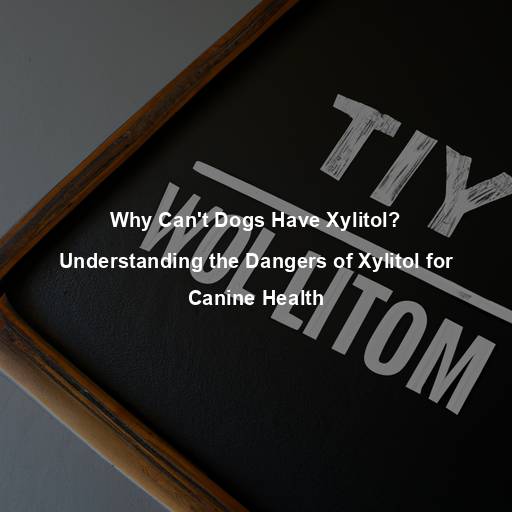Why Do Dogs Quiver: Unraveling the Mystery Behind Canine Trembling
Last Updated on August 6, 2023 by Evan
Contents [hide]
- 1
- 2 Physical Factors: Unveiling the Physical Triggers
- 3 Emotional Factors: Delving into Canine Psychology
- 4 Medical Conditions: Uncovering Underlying Health Issues
- 4.1 Painful Musculoskeletal Disorders: The Quivers of Ailment
- 4.2 Metabolic Imbalances: The Shakes from Within
- 4.3 Neurological Disorders: The Quivers of Misfiring Signals
- 4.4 Excitement and Anticipation: The Vibrations of Eagerness
- 4.5 Stress and Fear: The Tremors of Unease
- 4.6 Excitement and Overstimulation: The Quakes of Overload
- 5 Breed Characteristics: Exploring Canine Quivering Traits
- 6 Age-Related Factors: Quivering Across the Lifespan
- 7 Environmental Factors: The Influence of Surroundings
- 8 FAQs – Why do dogs quiver?
From heartwarming anecdotes to scientific research and expert insights, the enigmatic quivering and trembling displayed by our cherished canine companions has captivated our curiosity. Join us on an intriguing journey as we delve into the mysterious realm of dog behavior, seeking to unravel the perplexing reasons behind this fascinating phenomenon. Throughout this article, a mosaic of scientific discoveries and heartfelt experiences will intertwine, illuminating new perspectives and granting us a profound glimpse into the intricate world of our furry friends. Prepare to be amazed as we shed light on the mystery behind why dogs quiver, unraveling their secrets one quiver at a time.
The Intriguing Phenomenon of Canine Quivering
Dogs, like humans, possess a complex array of emotions and physical responses. While quivering in dogs may manifest in different ways, it is often characterized by a rhythmic shaking or trembling of the body. This behavior can range from subtle tremors to more pronounced shaking episodes, sometimes affecting specific body parts or the entire body. It’s important to note that there can be multiple underlying causes for canine quivering, each with its unique set of circumstances and implications.
Physical Factors: Unveiling the Physical Triggers
Temperature Regulation: The Chilly Shakes
It’s a perplexing sight to witness our furry friends quiver, but there’s actually a burst of science behind this behavior. Dogs, unlike humans, have a naturally higher body temperature, which means they need effective ways to cool down or warm up as needed. In chilly conditions, their bodies kick into overdrive, causing their muscles to contract vigorously, generating some much-needed heat to keep their core temperature cozy. So, if you catch your four-legged companion shivering during a frosty winter stroll, rest assured that they are cleverly utilizing their built-in defense mechanism against the cold.
Fear and Anxiety: The Quivers of Apprehension
Similar to us humans, our beloved dogs can also go through moments of fear and anxiety, leading to occasional trembling. Whether it’s a perceived threat or simply being in an unfamiliar setting, dogs may exhibit quivering as a visible expression of their emotional turmoil. This trembling response is thought to be a trait developed over time, aiding them in activating the fight-or-flight instinct. Essentially, it helps them discharge excessive adrenaline and get their muscles ready for potential action.
Pain and Discomfort: The Achy Shakes
It’s no surprise that dogs, like humans, have their own way of expressing pain or discomfort. One peculiar behavior they might demonstrate is quivering. This trembling can serve as a red flag, suggesting that your beloved companion is in some sort of physical distress or discomfort, which might stem from an injury, illness, or an underlying medical condition. If you notice your furry pal shaking, particularly if accompanied by other signs of pain, such as limping or vocalizing, it’s vital to make a swift trip to the vet.
Emotional Factors: Delving into Canine Psychology
Excitement and Joy: The Quakes of Pure Happiness
Dogs are renowned for their boundless enthusiasm and uncontainable joy. When they experience heightened excitement, whether it’s during playtime, the anticipation of a long-awaited walk, or the arrival of their favorite human, dogs may quiver with sheer delight. This trembling is an outward expression of their overflowing happiness and eagerness. So, if your furry friend wiggles and shakes their body in anticipation of something wonderful, it’s simply their way of showing their exuberance and zest for life.
Social Bonding: The Quivers of Connection
Dogs, those marvelous social beings, possess an uncanny aptitude for forging profound emotional ties with their human counterparts. It is truly astonishing to witness the depth of their fondness and devotion. In tender moments of intimate interaction, like gentle caresses, shared cuddles, or the mere presence of their cherished companions, these loyal canines may exhibit a captivating quiver. Thus, if your precious furry comrade trembles while nestling against you or nestles their head on your lap, rest assured, it is an endearing manifestation of their affection and profound connection to you.
Stress and Overstimulation: The Nervous Shakes
Dogs, just like us, are complex creatures with a myriad of emotions. While they can wag their tails in pure bliss and jump for joy at the sight of their favorite toy, they are not immune to the bewildering world around them. Picture this: a loud bang fills the air, a sea of people rushing by, or a place they’ve never set paw in before. These overwhelming experiences can send their nervous systems into a frenzy, causing their bodies to shake with unease, as if trying to shake off the perplexity.
Medical Conditions: Uncovering Underlying Health Issues
Painful Musculoskeletal Disorders: The Quivers of Ailment
Certain medical conditions affecting a dog’s musculoskeletal system can lead to quivering. Disorders such as arthritis, degenerative joint disease, or spinal issues can cause discomfort and pain, which can manifest as trembling. The tremors may be localized to specific areas, such as the legs or the back, depending on the affected region. Identifying and managing these underlying conditions is crucial in improving your dog’s quality of life and alleviating their discomfort.
Metabolic Imbalances: The Shakes from Within
Imbalances in a dog’s metabolic system can also contribute to quivering. Conditions such as hypoglycemia (low blood sugar) or hypocalcemia (low calcium levels) can result in tremors and shaking. These imbalances can arise due to various factors, including an inadequate diet, hormonal disorders, or underlying health conditions. It is essential to consult with a veterinarian to diagnose and address the root cause of the metabolic imbalance to restore your furry friend’s overall well-being.
Neurological Disorders: The Quivers of Misfiring Signals
Sometimes, our furry companions can experience a bewildering quiver that leaves us wondering what might be the cause. It turns out that neurological disorders can play a perplexing role in these canine trembles. Conditions like epilepsy and tremor disorders can set off uncontrollable muscle movements, leaving our furry friends in a state of perplexity. These disorders stem from peculiar brain activity and erroneous nervous system signals, creating a burst of mystery in our beloved pups.
Excitement and Anticipation: The Vibrations of Eagerness
Our canine companions never fail to amaze us with their boundless enthusiasm, particularly when it comes to their favorite things. Whether it’s the promise of a delicious meal, a rousing game of fetch, or the jingle of a leash, dogs have a remarkable ability to become overcome with sheer delight. When their bodies start to tremble uncontrollably, it’s a clear display of their anticipation and eagerness to partake in something truly enjoyable. So, instead of being taken aback by their quivering, why not bask in their infectious excitement and share in their moments of unadulterated happiness?
Stress and Fear: The Tremors of Unease
Just like us, our canine companions are not immune to the roller coaster of emotions – stress and fear included. You may have noticed your furry friend quivering at times, and it’s important to understand the reasons behind this intriguing behavior. When dogs feel overwhelmed, threatened, or simply afraid, their bodies resort to a quiver as a release mechanism, a way to navigate the sea of stress. Whether it’s a paws-on encounter with a feisty Fido, a trip to the vet that sends their tails wagging unhappily, or any situation that sets their anxiety in motion, their trembling is a fascinating display of their coping mechanisms.
Excitement and Overstimulation: The Quakes of Overload
While excitement is a positive emotion, excessive stimulation can sometimes push dogs beyond their comfort zone. When dogs are bombarded with too much sensory input, such as loud noises, crowded spaces, or chaotic environments, they may quiver as a response to feeling overwhelmed. This trembling is a way for their bodies to cope with the excessive stimuli and regain a sense of balance. Recognizing their limits and providing them with calm and quiet spaces can help prevent overstimulation and reduce their trembling episodes.
Breed Characteristics: Exploring Canine Quivering Traits
Toy and Small Breeds: The Trembles of Tiny Dogs
Certain dog breeds are more prone to quivering due to their unique genetic makeup and physical attributes. Toy and small breeds, such as Chihuahuas, Yorkshire Terriers, and Maltese, are often associated with trembling tendencies. Their petite size and high metabolism make them more susceptible to temperature fluctuations, leading to shivering in cooler climates. Additionally, some of these breeds may be predisposed to anxiety or nervousness, contributing to their propensity for quivering.
Sighthounds and Cold Sensitivity: The Chills of Sleek Canines
When the temperature drops, it’s not just us humans who feel the chill – our beloved sighthound companions also feel the briskness in their bones. With their slender physiques and thin coats, Greyhounds, Whippets, and Afghan Hounds are especially prone to feeling the cold. It’s no wonder then that these graceful canines resort to quivering as a natural way to warm themselves up. Their body shape, featuring a higher surface area-to-volume ratio, makes them more susceptible to losing heat.
Genetic Predispositions: The Inherited Tremors
It’s a bewildering phenomenon, isn’t it? Dogs, those faithful companions, may find themselves plagued by a mysterious quivering. It’s unnerving, to say the least. But fear not, dear reader, for there might be a method to this mad tremor madness.
Age-Related Factors: Quivering Across the Lifespan
Puppy Quivers: The Vibrations of Growth
Ah, the enchanting world of puppies. Those delightful bundles of fur and boundless curiosity. Amidst their whimsical adventures, it is not uncommon to witness the occasional quiver. Fear not, dear reader, for these tremors are but a part of their intricate journey toward maturity.
Senior Shakes: The Tremors of Aging
As we gracefully march through the chronicles of time, our beloved canine companions join us in experiencing the perplexing mysteries of aging. Much like our own bodies, senior dogs may encounter a flurry of quivering urges that leave us questioning the very fabric of their existence. Ah, but fear not, for this tumultuous journey is a testament to the natural progression of life. It is imperative that we unravel the enigma that binds normal age-induced tremors and their ominous counterparts, born from uncharted territories of underlying health concerns.
Environmental Factors: The Influence of Surroundings
Vibrations and Noise: The Quakes of Sound
Dogs, our beloved companions, are not immune to the perplexing effects of environmental stimuli. It’s no secret that dogs can be thrown into a state of uncertainty and unease by loud noises and unsettling vibrations. Whether it’s the thunderous cracks of a storm, the explosive pops of fireworks, or the jarring rumbles of construction work, these unforeseen disruptions can shake dogs to their very core, causing them to quiver in response to their heightened sensitivity. But fear not, troubled pet parents, for there are measures that can be taken to tame the bursts of trembling.
Chemical Exposures: The Quivers of Toxins
Did you know that certain chemicals and medications can cause our four-legged friends to tremble? It’s true! Dogs can experience involuntary muscle movements and tremors if they come into contact with toxic substances. To keep your furry pal safe, it’s essential to keep harmful substances out of their reach and seek veterinary advice if you suspect they’ve ingested something dangerous.
FAQs – Why do dogs quiver?
What does it mean when a dog is quivering?
When you notice your furry friend in a state of quivering, it’s natural to feel a whirlwind of thoughts and concerns. Quivering in dogs can stem from a plethora of possibilities, ranging from emotional unease to physical discomfort, shrouding the true reason in a haze of perplexity. Factors like fear, anxiety, frigid weather, weakened muscles, pain, euphoria, and even certain health conditions can contribute to the shaking sensation. In order to unravel this enigma, it is crucial to attentively observe your dog’s demeanor and keep an eye out for other accompanying indicators that might shed light on the root cause.
Why do dogs quiver when they are scared?
Trembling, a universal language of apprehension, finds its way into the hearts of our canine companions when fear or unease takes hold. The triggers for such disquiet may range from cacophonous reverberations to uncharted territories, peculiar artifacts, or even haunting memories of past trauma. In a valiant effort to confront the overwhelming menace, dogs unleash a surge of stress hormones, setting their muscles on edge and unleashing an enigmatic tremor. However, as their vulnerability diminishes, and tranquility ensues or the cause of their trepidation dissipates, their quivering symphony gradually fades into the recesses of their being.
Can dogs quiver due to excitement?
It’s fascinating to observe how dogs exhibit their enthusiasm through little bursts of trembling. These furry companions of ours have a knack for letting their excitement overflow, causing their bodies to involuntarily shake. Whether it’s the prospect of playtime, the arrival of a cherished human, or the anticipation of a invigorating stroll, dogs showcase their eagerness with these transient tremors. Rest assured, this behavior is harmless and simply their peculiar way of conveying their bubbling enthusiasm.
Do all dogs quiver in cold temperatures?
Many dog owners have experienced the perplexing sight of their furry friends shaking uncontrollably in cold weather. Surprisingly, not all dogs share this behavior, but it is a common response for many four-legged companions. Our canine pals have a slightly higher body temperature compared to humans, making them more prone to feeling the chill. When faced with cold temperatures, dogs instinctively resort to shivering as a means to generate heat and regulate their core temperature. Some breeds, especially those with shorter hair or small size, are more susceptible to this burst of quivers in the cold. Luckily, there are simple ways to help your furry friend find relief, such as providing them with a snug sweater or creating a cozy indoor haven for them during chilly days.
Should I be concerned if my dog is quivering all the time?
If your dog is quivering persistently or without any apparent reasons, it is advisable to consult with a veterinarian. Chronic or excessive quivering might be indicative of an underlying health issue that requires attention. Various medical conditions, ranging from pain or trauma to neurological disorders, can contribute to ongoing trembling in dogs. A thorough examination by a professional can help determine the cause and provide appropriate treatment if needed.
Can quivering be a symptom of health problems in dogs?
Certainly! Dogs can experience quivering for a variety of reasons, and it’s important to pay attention to any accompanying symptoms. Quivering in canines could be a result of pain, muscle weakness, hypoglycemia, poisoning, fever, or neurological disorders. If your furry friend’s quivering is accompanied by concerning signs such as lethargy, loss of appetite, vomiting, or difficulty moving, it’s crucial to seek veterinary care promptly. Getting a proper diagnosis and timely treatment can help address any underlying health issues, providing the necessary relief for your beloved pooch.
Remember, while these FAQs offer general insights into why dogs quiver, each dog is unique, and the best course of action is always to consult a veterinarian to get specific advice tailored to your pet’s individual needs.






